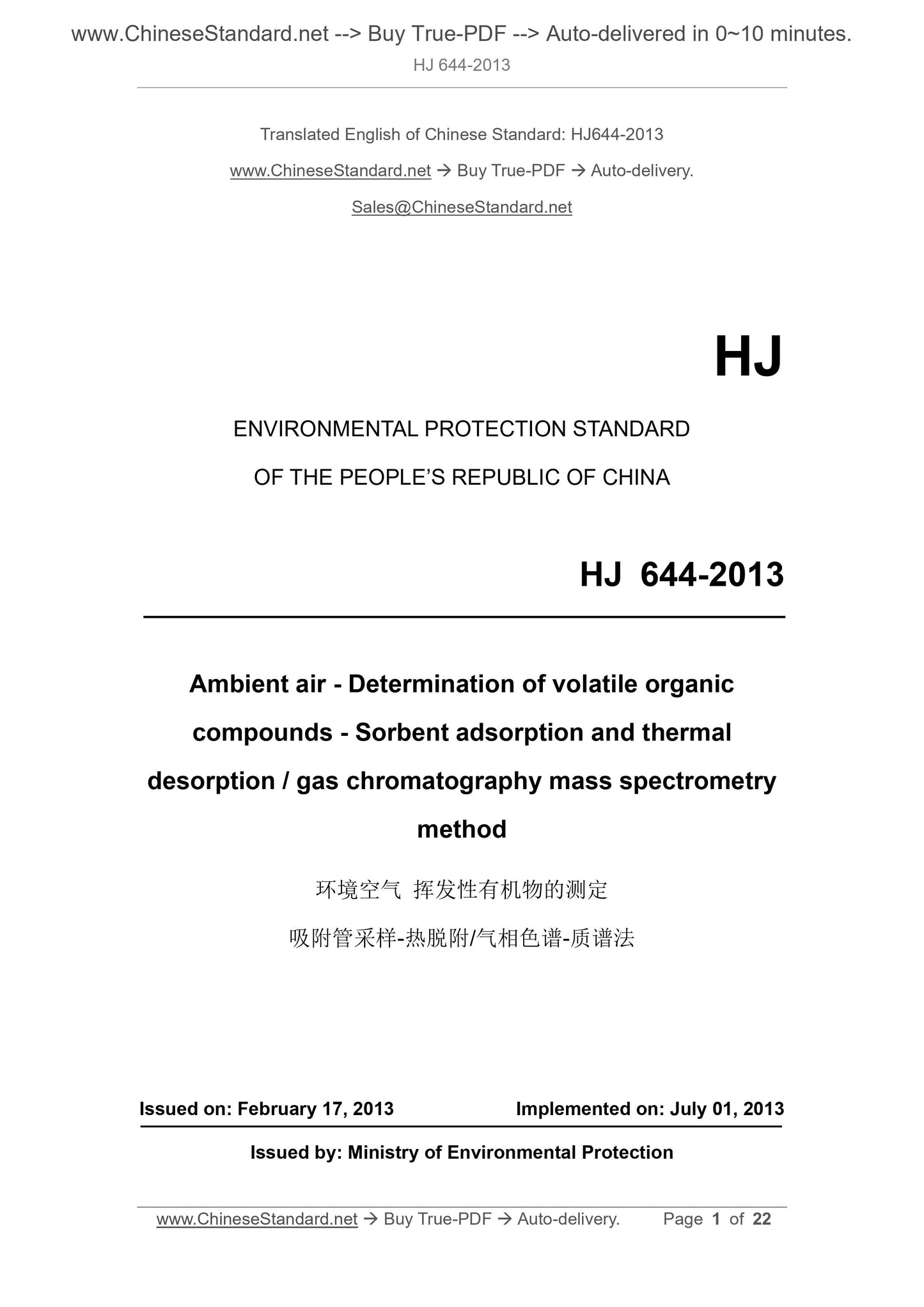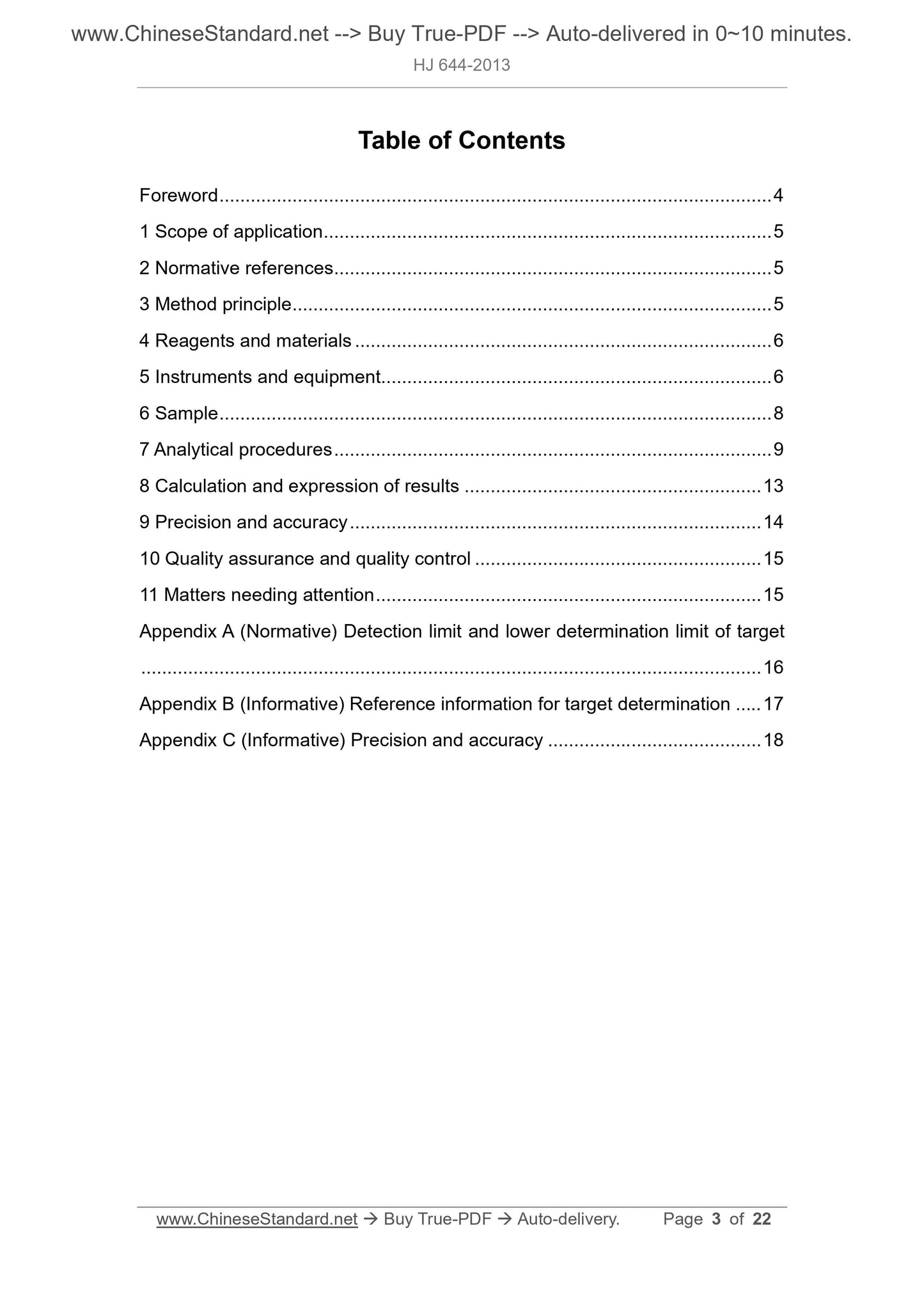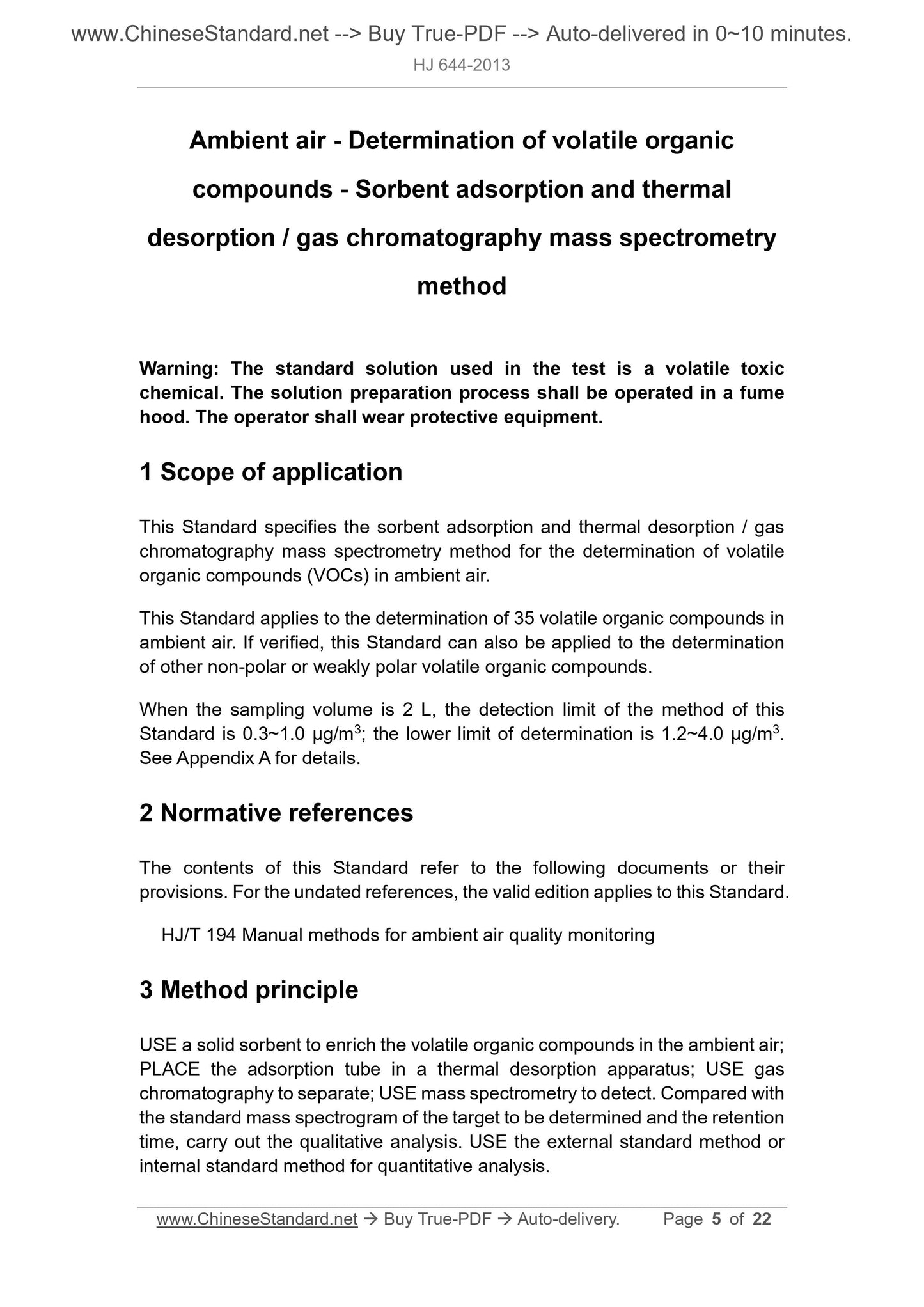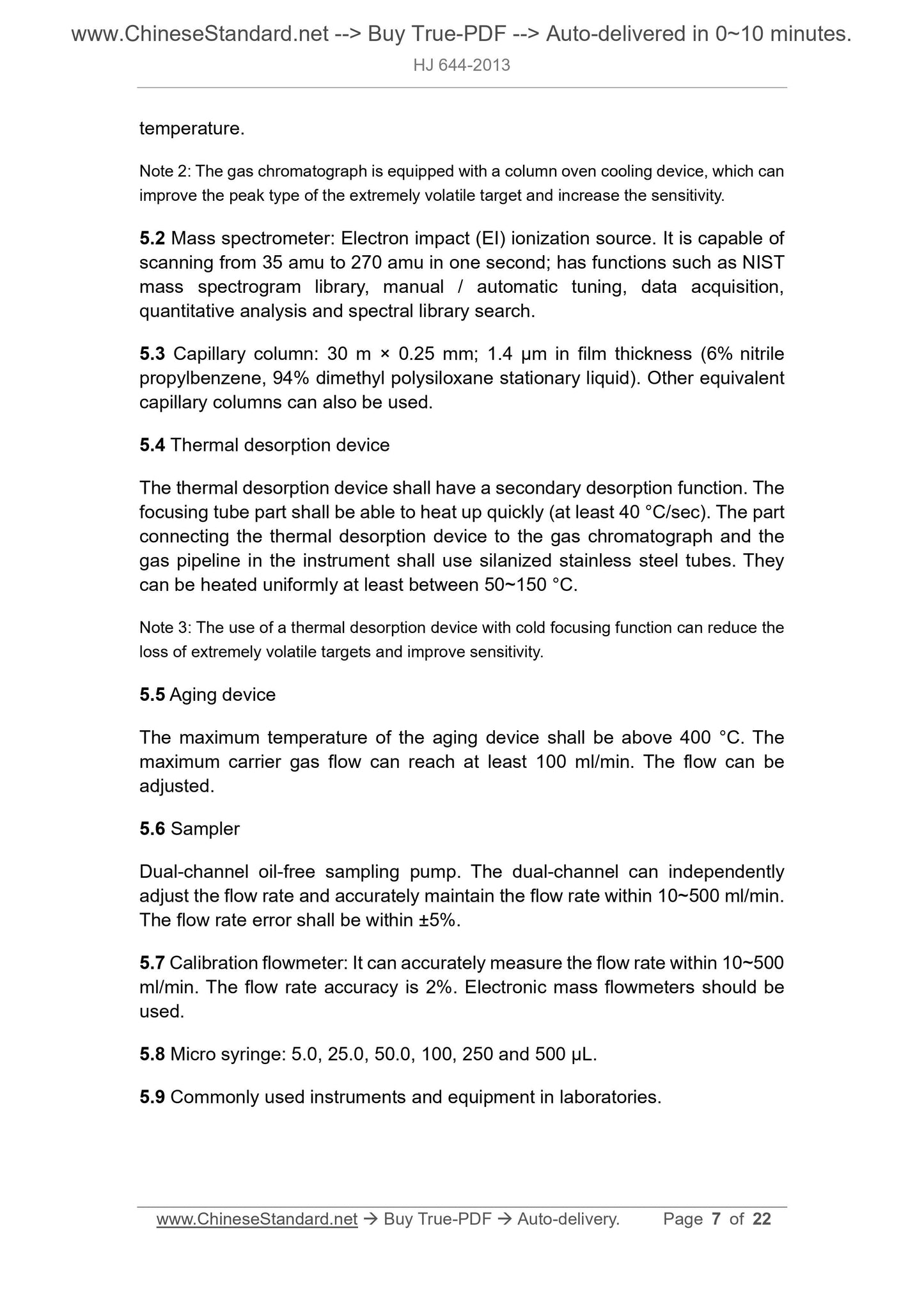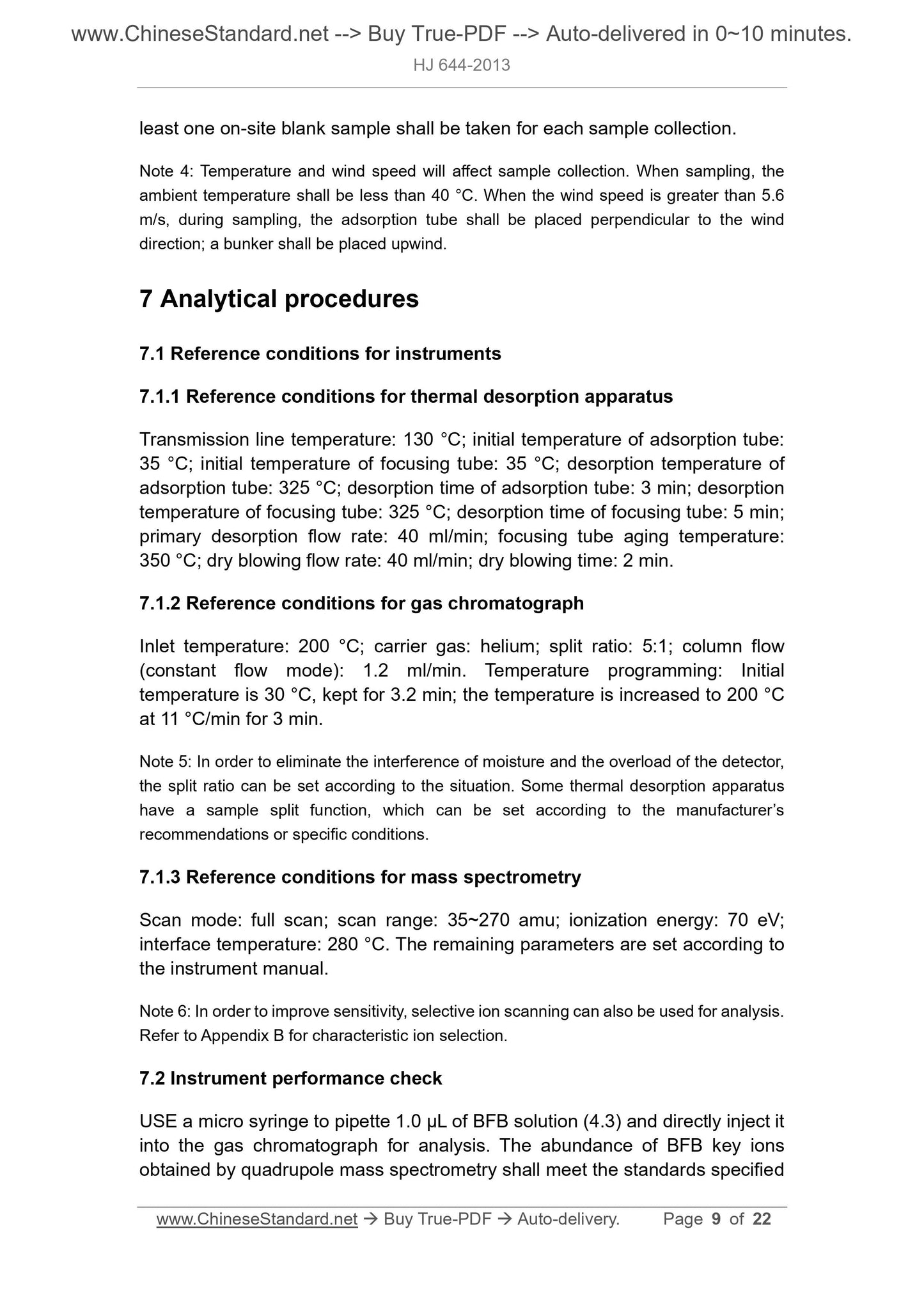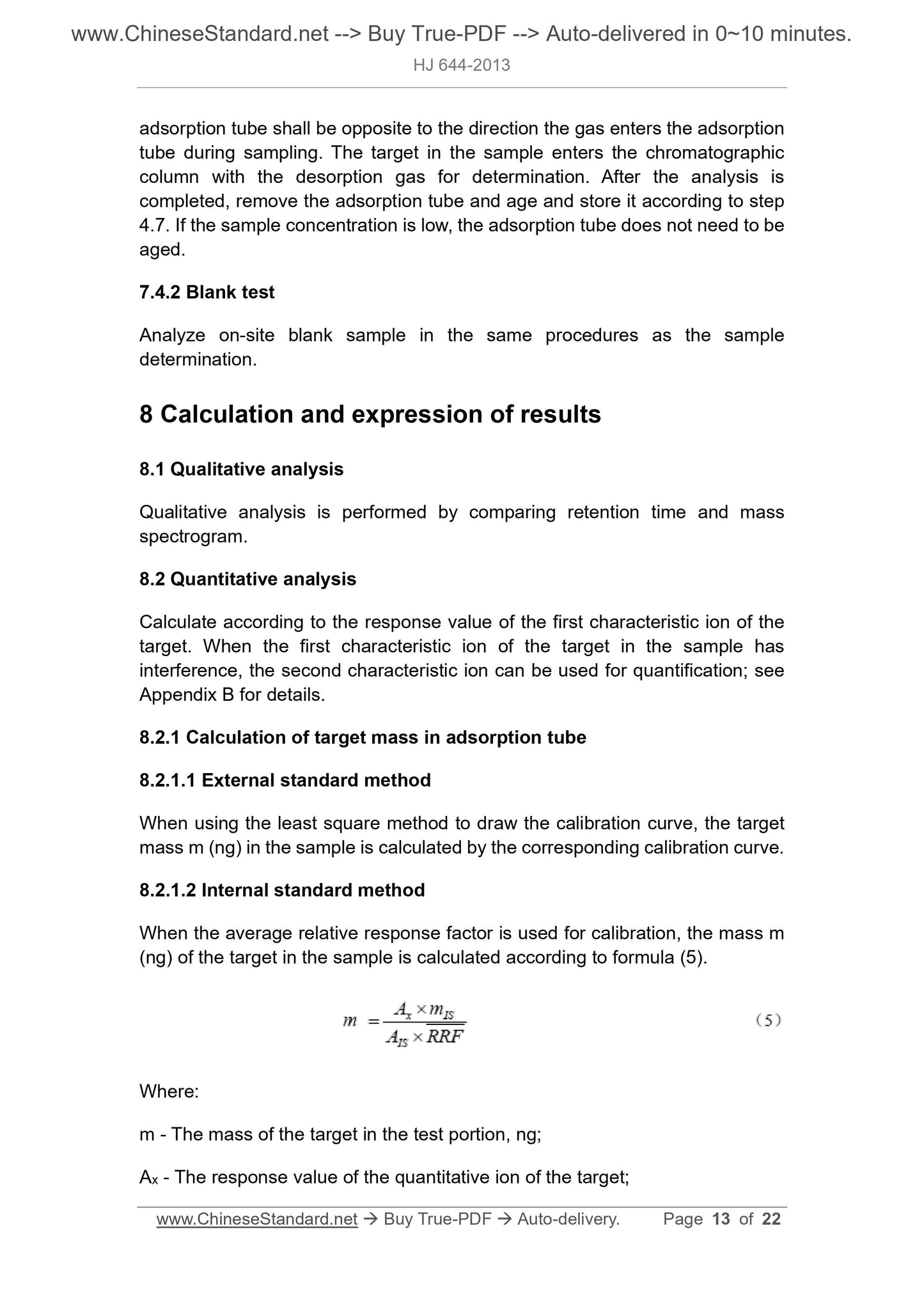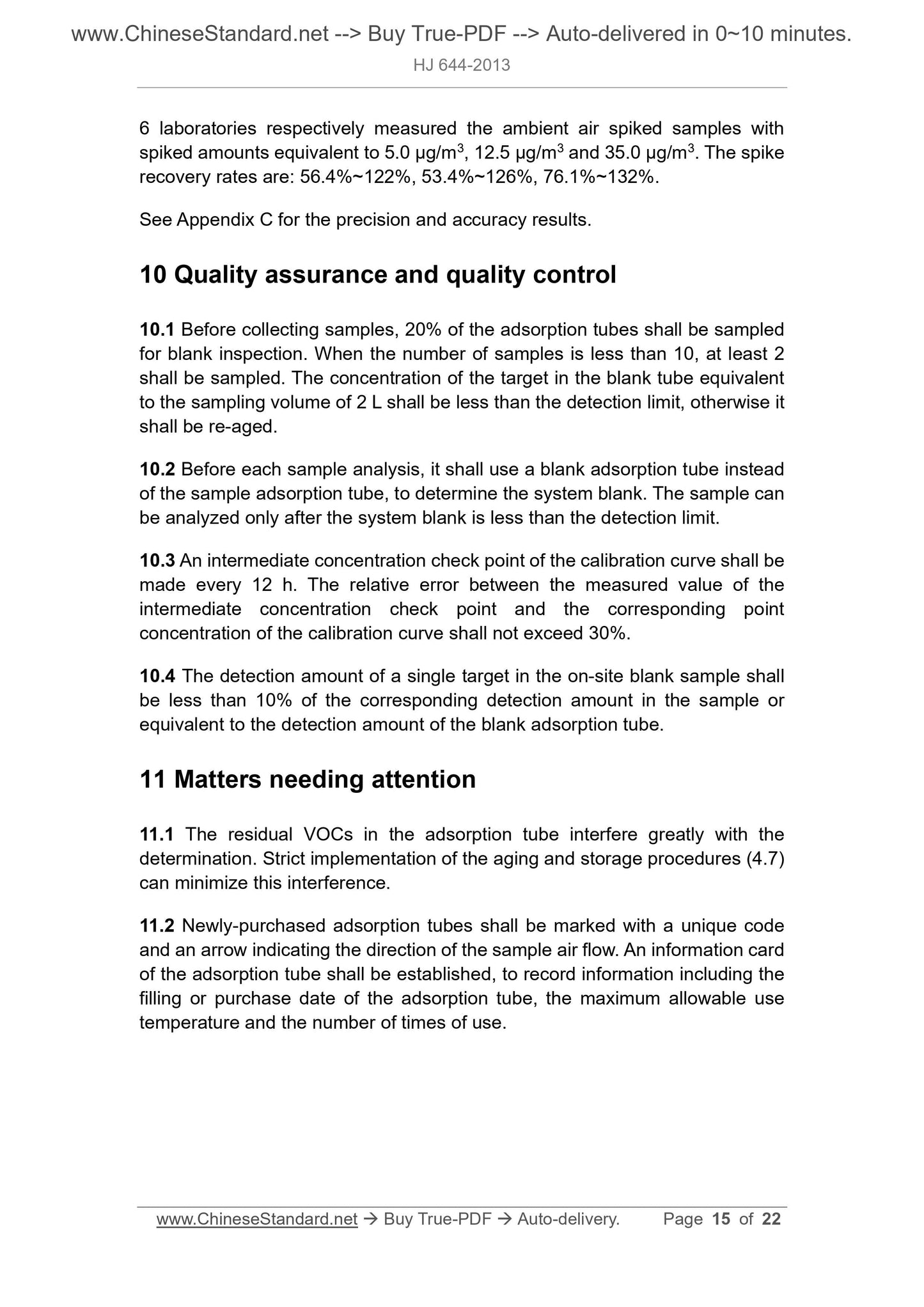1
/
of
7
www.ChineseStandard.us -- Field Test Asia Pte. Ltd.
HJ 644-2013 English PDF
HJ 644-2013 English PDF
Regular price
$125.00
Regular price
Sale price
$125.00
Unit price
/
per
Shipping calculated at checkout.
Couldn't load pickup availability
HJ 644-2013: Ambient air - Determination of volatile organic compounds - Sorbent adsorption and thermal desorption / gas chromatography mass spectrometry method
Delivery: 9 seconds. Download (and Email) true-PDF + Invoice.Get Quotation: Click HJ 644-2013 (Self-service in 1-minute)
Newer / historical versions: HJ 644-2013
Preview True-PDF
Scope
This Standard specifies the sorbent adsorption and thermal desorption / gaschromatography mass spectrometry method for the determination of volatile
organic compounds (VOCs) in ambient air.
This Standard applies to the determination of 35 volatile organic compounds in
ambient air. If verified, this Standard can also be applied to the determination
of other non-polar or weakly polar volatile organic compounds.
When the sampling volume is 2 L, the detection limit of the method of this
Standard is 0.3~1.0 μg/m3; the lower limit of determination is 1.2~4.0 μg/m3.
See Appendix A for details.
Basic Data
| Standard ID | HJ 644-2013 (HJ644-2013) |
| Description (Translated English) | Ambient air - Determination of volatile organic compounds - Sorbent adsorption and thermal desorption / gas chromatography mass spectrometry method |
| Sector / Industry | Environmental Protection Industry Standard |
| Classification of Chinese Standard | Z11 |
| Word Count Estimation | 17,154 |
| Quoted Standard | HJ/T 194 |
| Regulation (derived from) | Department of Environmental Protection Notice No. 12 of 2013 |
| Issuing agency(ies) | Ministry of Ecology and Environment |
| Summary | This standard specifies the determination of volatile organic compounds in ambient air (VOCs) adsorption tube sampling thermal desorption/gas chromatography mass spectrometry. This standard applies to the ambient air 35 kinds of volatile organic compounds |
Share
